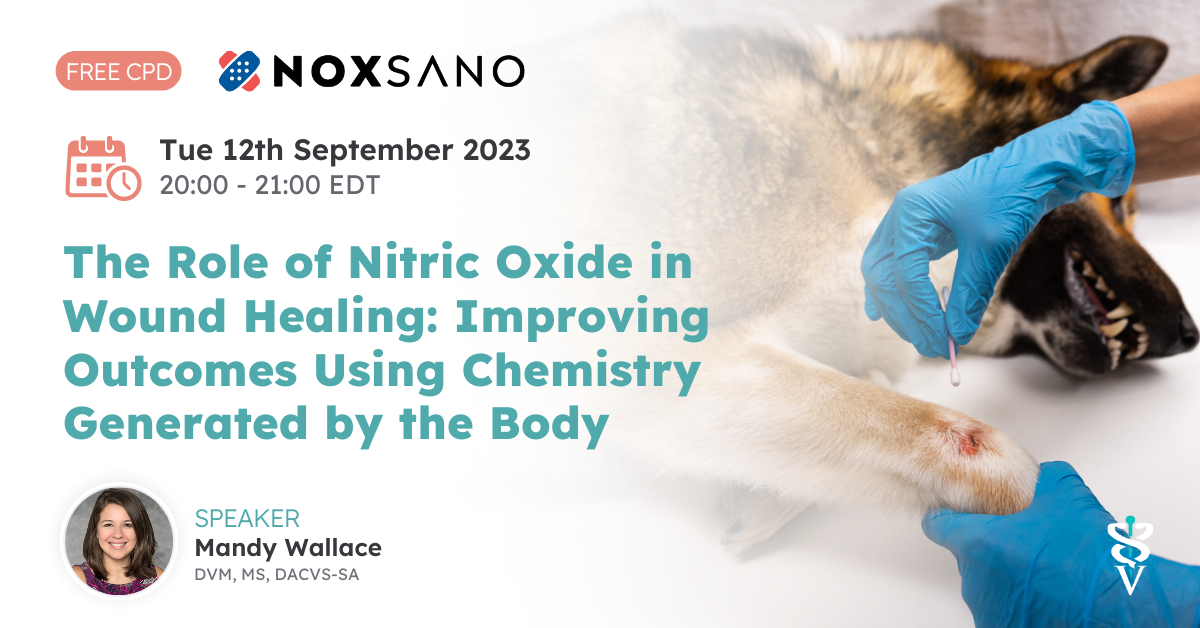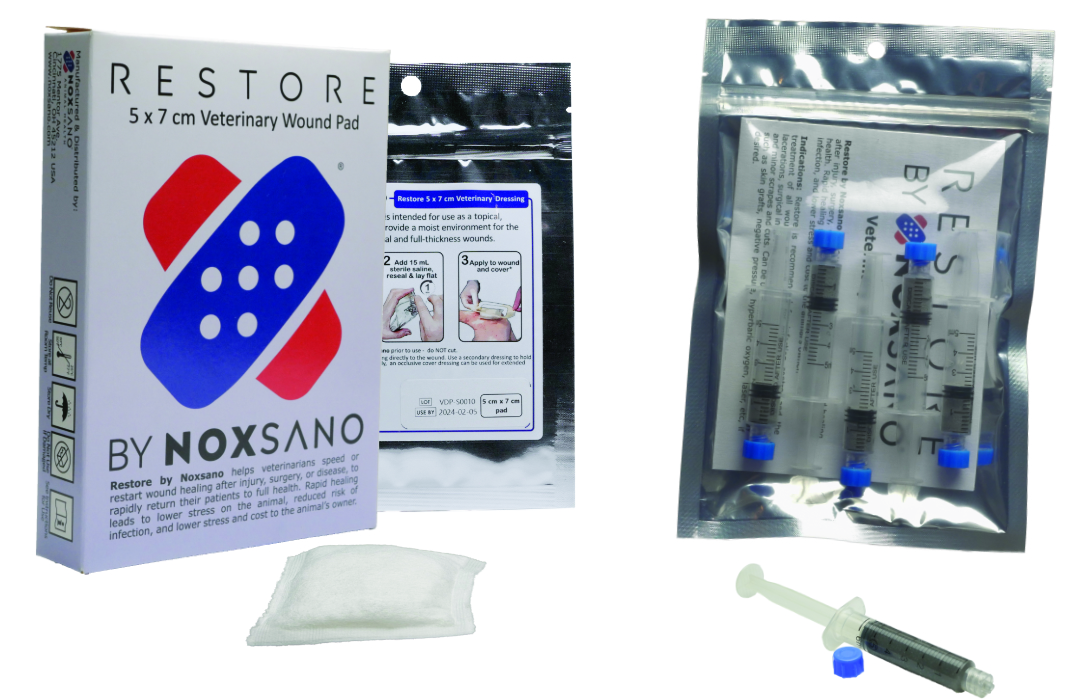
The Role of Nitric Oxide in Wound Healing
In veterinary medicine wounds are common. Wounds range from simple scrapes, surgical incisions, and dermatologic issues to serious life and limb threatening traumas. The body begins work immediately upon insult to the skin to repair damaged tissue and restore the functional barrier properties of the skin. Positive outcomes are challenged by a host of factors, such as wound location, wound type, and bacterial infection.
Wound healing is a complex physiological process that involves numerous cellular and molecular events. Wound care can require significant resources at a veterinary practice and compliance from the pet parent. Broad spectrum antibiotic use is common to control infection. Multiple daily dressing changes strain already busy practices. Improved wound treatments that address these challenges should be able to be utilized without the need for specialized regimens, training or equipment and high price tags.
Therapeutic application of nitric oxide (NO) is one such candidate. NO, an endogenous signaling molecule, has garnered significant attention due to its diverse and criticalfunctions throughout each post-hemeostasis phase of the wound healing cascade (image 1).
Image 1

Inflammatory phase: NO is produced by various cell types, including macrophages and neutrophils, and acts as a key mediator. The sustained release of NO during the inflammatory phase helps promote an efficient clearance of bacteria and dead tissue, facilitating the transition to the proliferative phase of wound healing and reducing reliance upon antibiotics.
Proliferative phase: NO influences collagen synthesis by modulating fibroblast activity. Studies have shown that NO enhances collagen production, contributing to the formation of a robust extracellular matrix. Furthermore, NO promotes the alignment of collagen fibers, which is critical for maintaining tissue strength and integrity during wound healing.
Remodeling phase:
Angiogenesis: NO plays a pivotal role in promoting angiogenesis through its vasodilatory effects on blood vessels which is vital to supply nutrients and oxygen to the healing tissue. NO stimulates the migration and proliferation of endothelial cells, leading to the formation of new capillaries within the wound bed. Endothelial cells in turn also release NO in response to growth factors, promoting relaxation of the vascular smooth muscle cells and subsequent vessel dilation.
Tissue Regeneration and Epithelialization: NO plays a critical role in the migration and proliferation of epithelial cells. Furthermore, NO aids in the recruitment of keratinocytes and fibroblasts to the wound site, accelerating tissue repair.
How Can a Practicing Veterinarian Utilize NO?
Noxsano’s recently introduced Restore Wound Pads and Wound Gels enable controlled topical delivery of nitric oxide directly to the wound bed, preventing infection and actively stimulating the physiological processes needed to drive wound closure. The resulting benefits are remarkable compared to existing treatments:
Restore is applied to the wound as a primary dressing.
Independent clinical studies of Restore show 40% faster wound healing. Restore delivers faster granulation, reduction in total wound area, and increased percent contraction.
Restore prevents and remediates localized infections. NO delivered from Restore kills or removes pathogens in the wound bed and promotes immune cell growth and activity. This reduces or removes the need for prophylactic systemic antibiotics and the increased cost, complexity, and potential side effects they add to animal healing.
Restore is activated by addition of water, to produce NO for multiple days which promotes blood flow, angiogenesis, proliferation, and epithelialization, resulting in improved wound healing.
Restore reduces both time to heal and number of clinic visits. Fewer, less frequent changes and office visits, faster healing, and less complications decrease stress on the animal, lower costs for the pet owner, and reduce clinic overhead. No additional training or equipment needed.
Restore represents a significant savings. Costs to achieve wound healing (including number of bandage changes, cost of antibiotics, hospital stays, need for advanced therapies, etc) are reduced by the use of Restore wound treatments.
Available products in the Restore product line (image 2) include:
Restore Wound Pads — Restore wound pads are non-adherent and used with the veterinarian’s secondary dressing choice. They are designed for use up to seven days, so less frequent dressing changes are required. The pads provide an ideal wound healing environment and contain hydrocolloidal components that aid in exudate management. Restore wound pads are available in multiple sizes, easily conform to the wound bed, and can be used alone or combined with other wound therapies.
Restore Wound Gel — Restore wound gel is a hydrogel that can be applied directly to the wound bed. Restore gel is ideal for large wounds, irregularly shaped wounds, or wounds in high-mobility areas where a secure bandaging may be difficult.
Image 2

Two to three changes per week is recommended to minimize the total number of touch points while maximizing the speed of wound closure relative to other wound healing products. Noxsano pads and gel are extremely useful for managing large, complex wounds as well as smaller wounds and surgical incisions.
Noxsano’s innovative NO technology is an exciting new veterinary treatment that can accelerate healing and prevent infection in wounded and post-surgical patients. To learn more about the role of nitric oxide in wound healing, the clinical data behind Restore, and how best to apply Restore by Noxsano, sign up for the webinar…..
